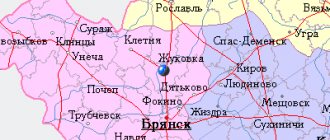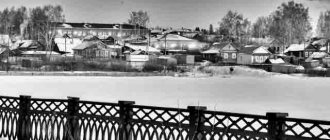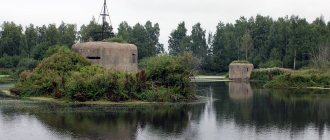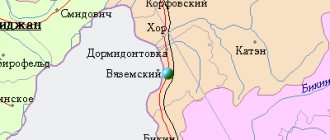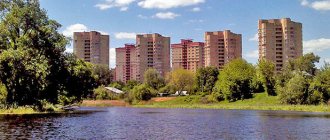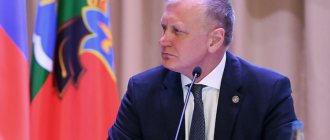Administrative subordination includes:
Cities:
- Klin city
- City Vysokovsk
Settlements:
- Settlement Demyanovo
- Settlement Zubovo
- Settlement Lesnoy
- Settlement Nudol
- Settlement Sankovo
- Settlement Turkmen
- Tchaikovsky's Settlement
- Settlement of Shevlyakovo
- Settlement of Narynka
- Settlement PMK-8
- Settlement d/o Vysokoye
- Settlement Markov Forest
- Settlement Vygol
- Settlement Yamuga
- Settlement Razdolye
- Settlement of the Brick Factory
Work villages:
- Workers' settlement Reshetnikovo
Villages:
- Akatovo village
- Akatevo village
- Aksenovo village
- Aksenikha village
- Akulovo village
- Village Andriankovo
- Alferyevo village
- Village Ananino
- Village Andriankovo
- Annenka village
- Ateyevka village
- Village Afanasovo
- Village Baklanovo
- Village Beketovo
- Village Belavino
- Belozerki village
- Berezino village
- Village of Birevo
- Boblovo village
- Bogaikha village
- Boldyrikha village
- Village Bolshoye Shchapovo
- Village Boris-Gleb
- Borisovo village
- Village Borikhino
- Borki village
- Village of Borozda
- Village Bortnikovo
- Bortnitsy village
- Village Vasilevo
- Village Vasilyevskoye-Soimonovo
- Village Vasilkovo
- Village Vatolino
- Village Velmogovo
- Village Vertkovo
- Village Vladimirovka
- Village Vladykino
- Village Volovnikovo
- Village of Volosovo
- Voronino village
- Vysokovo village
- Village Vyuhovo
- Village Gafidovo
- Village Glukhino
- Village Golenishchevo
- Village Golikovo
- Village Golovkovo
- Village Gologuzovo
- Village Golyshkino
- Gorbovo village
- Goritsy village
- Gorki village
- Village Gorodishche
- Village Greshnevo
- Village Grigorievskoye
- Village of Gubino
- Village Davydkovo
- Village Denisovo
- Village of Dmitrieva
- Village Dmitrokovo
- Dorshevo village
- Village Durasovo
- Village of Dyatlovo
- Village Egoryevskoye
- Village Ekaterinivka
- Village Elgozino
- Elino village
- Village Eltsovo
- Village Erosimovo
- Village Zhestoki
- Village Zhukovo
- Village Zabolotye
- Village Backyard
- Village Zalesye
- Village Zaovrazhye
- Village Zakharovo
- Village Zakharovo (Spas-Zaulkovskaya village)
- Village Zolino
- Village of Ievlevo
- Village Igumnovo
- Village Ilyino
- Village Isakovo
- Village Kalinino
- Village Karavaevo
- Village Kitenevo
- Village Klenkovo
- Village Klimovka
- Village Knyaginino
- Kovylino village
- Kolosovo village
- Komlevo village
- Kondyrino village
- Konoplino village
- Kopylovo village
- Village Korenki
- Village of Korost
- Village Koskovo
- Village Krupenino
- Village of Krutsi
- Village Kryukovo
- Village Kuznetsovo
- Village Kuznechkovo
- Lavrovo village
- Village Lazarevo
- Village Lovtsovo
- Village Lukino
- Village Maksimkovo
- Village Maksheevo
- Maleevka village
- Malaya Borshchevka village
- Village of Maloye Shchapovo
- Marino village
- Village Marfino
- Masyugino village
- Village Mashherovo
- Village Medvedkovo
- Melenki village
- Milukhino village
- Village Miklyaevo
- Village of Minino
- Misirevo village
- Mikhailovskoye village
- Nagornoye village
- Village Muzhevo
- Myakinino village
- Nagornoye village
- Village Nadezhdino
- Village Nazaryevo
- Village Naprugovo
- Village Nekrasino
- Village Nepeytsino
- Nikitskoye village
- Nikolaevka village
- Nikolskoye village
- Village Novaya
- Village Novikovo
- Village New
- Novoselki village
- Village Novoshchapovo
- Village Nogovo
- Village Ovsyannikovo
- Village Opalevo
- Village Opritovo
- Orlovo village
- Village Otrada
- Village Paveltsevo
- Village of Pershutino
- Petrovka village
- Village Pluskovo
- Village Podzhigorodovo
- Village Podoistrovo
- Podorki village
- Village Podterebovo
- Village Pokrov
- Pokrovka village
- Village Pokrovskoye-Zhukovo
- Village Polukhanovo
- Village Polushkino
- Popelkovo village
- Village Popovka
- Village Praslovo
- Village Empty Melenki
- Village Radovanie
- Village Reshotkino
- Village Rogatino
- Rubchikha village
- Village Rumyanovo
- Village Rusino
- Village Svistunovo
- Village Selevino
- Village Selifonovo
- Village Semenkovo
- Village Semchino
- Village Sergeevka
- Village Sinkovo
- Sitniki village
- Village Skrepyashchevo
- Village Sloboda
- Slobodka village
- Village Smetanino
- Village Razdolie
- Village Sogolevo
- Sokovo village
- Village Sokolovo
- Village of Spas-Korkodino
- Village Spasskoye
- Spetsovo village
- Village Stepantsevo
- Village Stepankovo
- Village Streglovo
- Village Strelkovo
- Village Strubkovo
- Village of Taksino
- Village Tarasovo
- Village Tarhovo
- Village Temnovo
- Village Terenino
- Village Teterino
- Tiliktino village
- Timonino village
- Village Tikhomirovo
- Village Troitskoe
- Tretyakovo village
- Village Trekhdenevo
- Village Troitskoe
- Ukrainka village
- Village Frolovskoye
- Khlynikha village
- Village of Khokhlovo
- Village Chernyatino
- Village Chumichevo
- Village Sharino
- Shevelevo village
- Sheverikha village
- Village Shipulino
- Shiryaevo village
- Shchekino village
- Yamuga village
- Village Yasenevo
- Village of Alexandrovo
- Butyrki village
- Village of Mishnevo
- Village Troitsino
- Red Hill Village
- Village Kononovo
- Kosovo village
- Village Savino
- Village Vladykina Gora
- Village Vvedenskoye
- Village Matveevo
- Village Yazykovo
- Village Sidorkovo
- Terekhova village
- Village Titkovo
- Village Puptsevo
- Parfenkino village
- Village Papivino
- Sokhino village
- Alekseykovo village
- Village Kadnikovo
- Gorki village
- Village Ivanovskoe
Klinsky district is located in the northwestern part of the Moscow region. The district borders the Lotoshinsky, Volokolamsky, Istra, Solnechnogorsky and Dmitrovsky districts of the Moscow region, as well as the Tver region. On the territory of the region there are 265 settlements, 2 military camps and 272 gardening partnerships with the number of summer residents living in the amount of ~29 thousand. The administrative center is the city of Klin .
The area of the region is 2001 km². The population of the Klinsky district is 126.9 thousand people.
The terrain is hilly, intersected by small ravines. The height of the hill is 20-40m. The streams are not wide - up to 3 m, with a sandy and muddy bottom. The forests have dense undergrowth and clearings. Pine and birch predominate to the east and south, spruce and aspen to the north and west. Geographically, forests located on the territory of the Klin municipal district belong to
Klin forestry branch of the Federal State Institution “Mosoblles”; Federal State Institution Zavidovskoe military forestry of the State Committee for Economy of the Ministry of Defense of the Russian Federation; partially - to the Ministry of Defense of the Russian Federation; partially to the Technological Central Bank of the Russian Federation; Federal State Institution "Istrinsky Forestry" FALH.
“Zavidovo” is partially located on the territory of the district .
Primitive communal settlements in the territory occupied by the Klin region existed several thousand years ago. Towards the middle? millennium AD include archaeological sites testifying to the Slavic nature of the settlements.
The district was formed in 1929.
In September 1939, the Vysokovsky district was separated from the Klinsky district , it included the lands of Krugovskaya, Petrovskaya, Vladykinskaya volosts, as well as Sankovsky peat mining. The center of this area became Vysokovsk, which received city status in October 1940.
The Nazis ruled the Klin region . On December 5, our troops went on the offensive. Army of General D.D. Lelyushenko headed towards the Moscow-Leningrad highway. The 8th Tank Brigade launched an assault attack against the Nazi group located in the village of Yamuga. The Nazis were forced to retreat along a narrow snow-covered road. On December 16, 1941, the city of Vysokovsk and the entire Klinsky district (at that time Vysokovsky) was completely liberated from the fascist invaders, the front line moved to the west. The Nazis burned 10 villages in the region, including Svistunovo, Vysokovo, Ovsyannikovo, Bortnitsy, and Baklanovo.
In 1957, Vysokovsky District was again merged with Klinsky District .
The climate in the area is moderate continental. The long-term average annual temperature is +4°C, the average temperature in January is +10°C, in July +17°C, +18°C. The average annual rate of sunny days is 90. The average duration of snow cover is 150 days. The predominant wind direction is western, northwestern, 2-5 m/s. Precipitation ranges from 450 to 650 mm per year.
The territory of the region is characterized by the wealth of rivers that make up the Volga and Moscow river basins. The largest river in the region is Sestra . In the northwestern part of the region there are large reservoirs of artificial origin created for growing fish. There are no large lakes.
The Klinsky district has 19 historical and cultural objects of Federal (all-Russian) significance, 36 monuments of religious significance, 25 of which are active. On the territory of the Klinsky district there are 25 operating churches, the leading ones of which are: “ Joy of All Who Sorrow ”, “ Uspenskaya ” ( Demyanovo estate ), “ Voznesenskaya ” (village of Borshchevo), Smolenskaya ” (village of Voronino), “ Kazanskaya ” (village of .Klenkovo), “ Archangel Michael ” (village of Podzhigorodovo), “ Transfiguration ” (village of Spas-Zaulok).
on the territory of the Klinsky district . Klin , Maidanovo, Frolovskoye - these places in the Moscow region entered the history of musical culture with the name of the great Russian composer P.I. Tchaikovsky . The house-museum of P.I. Tchaikovsky is the oldest music museum in our country, open to visitors since 1894. His music is still heard in the composer’s house.
A remarkable monument of Russian culture, the Demyanovo estate has been known since the mid-18th century. In 1785, on the way to Moscow, Catherine II and her retinue stopped here, and a granite column was erected in memory of her stay. Over the years, the owners were the Golitsyns , Naumovs , Poltoratskys , and Mertvagos . In 1883, the estate was acquired by V.I. Taneev , the elder brother of the composer S.I. Taneev.
Not far from the city of Klin there is one of the most picturesque corners of the Moscow region - the village of Boblovo. Dmitry Ivanovich Mendeleev, lived and worked for more than 40 years .
There are 33 military graves in the district, which are monuments of local significance.
Official website of the District Administration: www.klincity.ru
Klinsky district
Historical reference
The first mention of the city in the written source “Nikon Chronicle” dates back to 1317.
This date is the founding date of the city. In the 16th century, the city of Klin, located on a large land route between Moscow and St. Petersburg, received a significant economic incentive for development. At the beginning of the 16th century, by his Decree, Peter 1 turned the city into Yamshchina. This is how a new industry was born here. For almost a century and a half, Klin was a city of coachmen, as is reminiscent of the coat of arms depicting a galloping postman with a horn in his hand. By the reform 1781, Klin was confirmed as a district town in the Moscow province. The construction of the Nikolaev railway in 1851 changed the appearance of the city and the life of the townspeople. Glass factories, a ribbon weaving factory, and an iron foundry were opened here. The largest enterprise in the district was the Vysokovskaya manufactory.
The architectural and spatial structure of the historical part of Klin was finally formed at the turn of the 18th-19th centuries and has survived to this day almost unchanged. This structure is a single complex of the natural landscape of the city and its surroundings, of the planning system of streets, squares, buildings, and structures.
The earliest surviving architectural monument in Klin is the Assumption Church of the 16th century - a rare and unique monument of the Moscow period of ancient Russian architecture. In the center of the city there are stone Trade Rows, which are a monument of urban planning of Federal (all-Russian) significance. Experts consider the Klin Trading Rows to be among the best retail premises of the pre-revolutionary era. Some details of the architectural design have preserved the names of blacksmith craftsmen. Among them is a door decorated with forged parts - “Ivan’s shop 1886.” Timofey Chilyshov worked."
In the center of the city there is a Cathedral complex , which was formed during the 17th and 19th centuries, which included such architectural monuments as: the Bell Tower, the Trinity Cathedral, the Hotel and its earliest building - the Resurrection Church (1712). Without going into a detailed description of all the buildings, it should be noted that this group of monuments plays a leading role in the silhouette of the city. A significant part of such buildings were identified during recent research and placed under protection. For example, the Ensemble of public places of the 1st half of the 19th century, the Women's Gymnasium of 1904, which fit well into the architectural space of the historical part of the city.
In the life of every small town, all events are of great importance. That is why the residents of Clinch value every little thing in the history of our region. The Klinsky district has 19 historical and cultural objects of Federal (all-Russian) significance, 36 monuments of religious significance, 25 of which are active. On the territory of the Klinsky district there are 25 operating churches, the leading ones of which are:
“Joy of All Who Sorrow”, “Uspenskaya” (Demyanovo estate), “Voznesenskaya” (village of Borshchevo), “Smolenskaya” (village of Voronino), “Kazanskaya” (village of Klenkovo), “Archangel Michael” (village of Podzhigorodovo) , “Transfiguration” (village Spas-Zaulok).
Thanks to the amazing Russian nature and beautiful landscape, outstanding scientists, musicians, writers, and artists lived and worked in Klin. Among them are D. Mendeleev, A. Popov, P. Tchaikovsky, S. Taneev, K. Timiryazev, A. Vasnetsov. The famous Soviet sculptor V.I. Mukhina lived in the village of Borisovo. The famous actor was born in Klin. USSR artist M.I. Prudkin and people's artist. RSFSR E.P. Leonov, cosmonaut Yu.P. Artyukhin, Minister of General Engineering Twice Hero of Socialist Labor S.A. Afanasyev.
on the territory of the Klinsky district . Klin, Maidanovo, Frolovskoye - these places in the Moscow region entered the history of musical culture with the name of the great Russian composer P.I. Tchaikovsky. The house-museum of P.I. Tchaikovsky is the oldest music museum in our country, open to visitors since 1894. His music is still heard in the composer’s house.
The name of P.I. Tchaikovsky is also associated with the oldest music school in the Moscow region - the P.I. Tchaikovsky Children's Art School (1934).
Not far from the city of Klin there is one of the most picturesque corners of the Moscow region - the village of Boblovo. Here, in a 19th-century estate, the great compatriot, warrior of Russian science, Dmitry Ivanovich Mendeleev, lived and worked for more than 40 years. This place played a significant role in the lives of many famous people. D. Mendeleev was visited by scientists N.M. Menshutkin, I.N. Zelenin, radio inventor V. Popov, artists N. Eroshenko, A. Kuindzhi, I. Repin, poets A. Blok, A. Bely, S. Soloviev. Currently, Boblovo houses the museum-estate of D.I. Mendeleev, which is a monument to Russian science and culture of the 19th century.
In 1989 in Klin , in the house where from 1938 to 1941. Soviet writer A.P. Gaidar lived and worked, a museum was opened, which presents an exhibition with documents, photographs, books, personal belongings, and household items related to the life and work of the writer.
In 1990, the city of Klin received the status of a historical city (Resolution of the board of the Ministry of Culture of the RSFSR, the board of the State Construction Committee of the RSFSR and the Presidium of the Central Council of VOOPIK No. 12 dated 02.19.90).
The residents of Klin remember and honor the memory of those who died during the Great Patriotic War. More than 22 thousand residents of the Klin district left to defend their homeland. 22 days of fascist occupation became a difficult ordeal for the city. There are 33 military graves in the district, which are monuments of local significance.
The post-war and modern history of Klin is the history of a city of workers throughout the country, known throughout the country for its enterprises such as “Meat Processing Plant”, “Beer Plant”, and “Termopribor”, enterprises in the construction industry. Modern Klin is a large economic center of the Northern Moscow region. Based on the results of the last 7 years, it has been recognized as one of the most dynamically developing regions of the Moscow region in terms of economic, social and cultural indicators.
